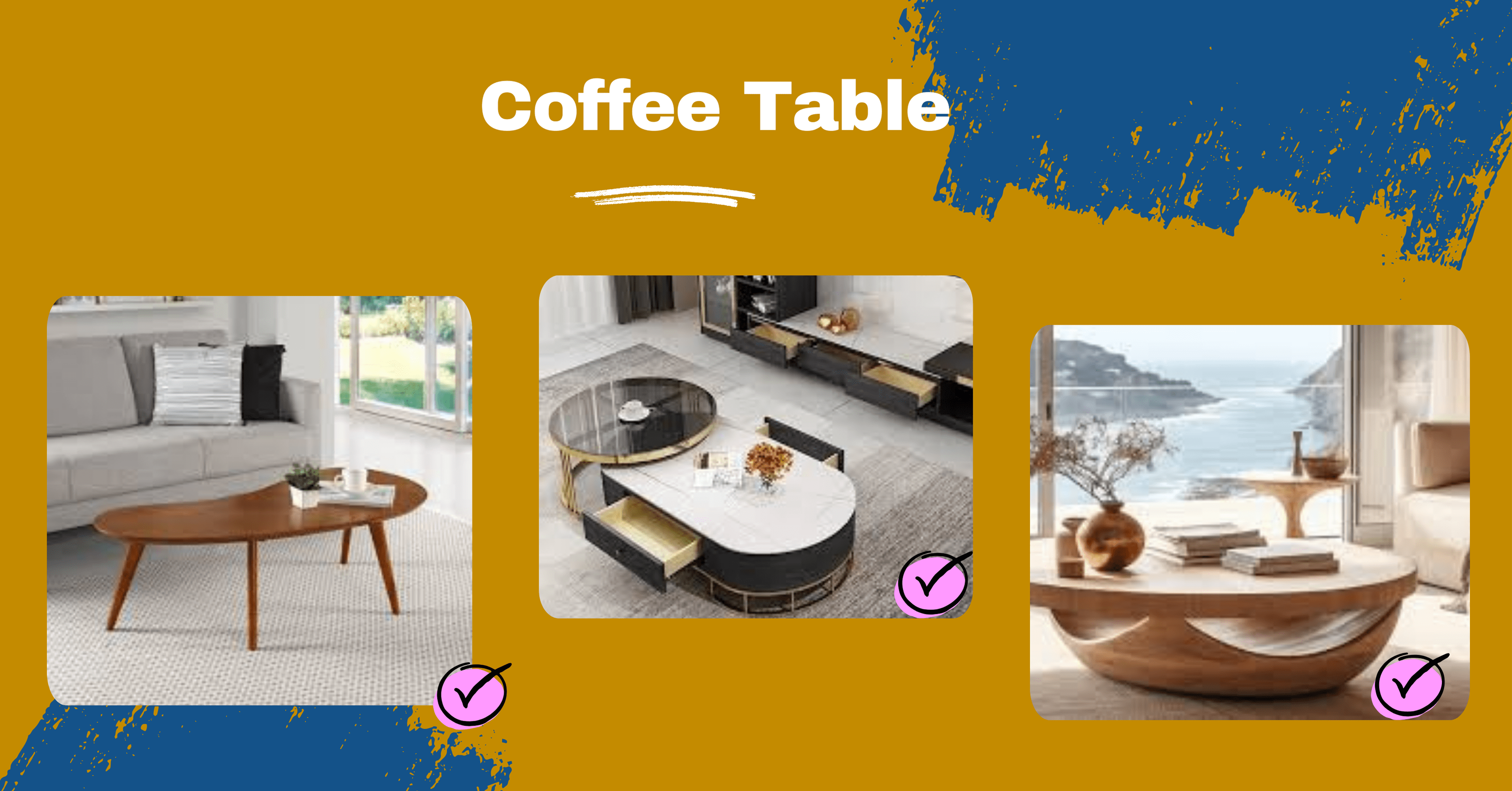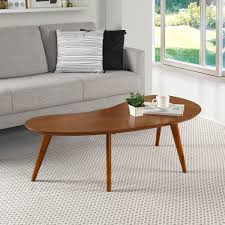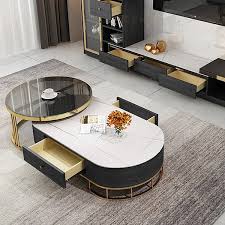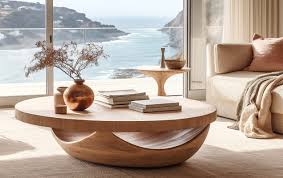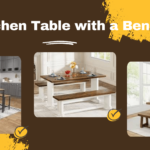A coffee table is more than just a functional piece of furniture; it’s the centerpiece that ties a living room together, creating balance and harmony. Whether you’re looking to make a statement or complement the design of your room, the right coffee table can transform your space. In this guide, we’ll walk you through everything you need to consider to choose the perfect coffee table for your home.
1. Understanding the Purpose of a Coffee Table
Before shopping for a coffee table, defining its purpose is essential. Are you looking for a stylish centerpiece, a functional piece that doubles as storage, or something easy to move around? Answering these questions will help you narrow down your choices.
Primary Uses of a Coffee Table
- Decorative: If the coffee table’s primary role is aesthetic, you may focus on materials, finishes, and shapes that align with your living room’s design theme.
- Functional: If you frequently entertain guests or enjoy lounging, opt for a coffee table with added storage or versatility.
- Multi-functional: Some tables come with built-in storage compartments or additional shelving, perfect for organizing books, remote controls, and more.
2. Choosing the Right Shape
The shape of your coffee table is pivotal to ensuring it complements the seating arrangement in your living space.
Rectangular Coffee Table
The classic rectangular coffee table is ideal for larger living rooms with standard sectional or sofa setups. The elongated shape offers plenty of surface area for decorative items and essentials like beverages and reading materials.
Round and Oval Coffee Table
For smaller spaces or homes with children, round and oval tables are an excellent option. Their lack of sharp edges makes them safer, and they tend to create a softer, more inviting feel.
Square Coffee Table
Square tables work well in more compact living rooms. They create symmetry and work best in square seating arrangements.
Freeform and Asymmetrical Coffee Tables
For those looking to make a bold design statement, freeform or asymmetrical coffee tables add a unique and artistic flair to the room. They often serve as conversation starters and can enhance the artistic or modern appeal of the room.
3. Selecting the Right Size
One of the most critical factors when choosing a coffee table is size. A poorly sized coffee table can throw off the proportions of your entire room.
Height Considerations
Your coffee table should generally be the same height as your sofa cushions, or 1-2 inches lower. A standard height for coffee tables is around 16 to 18 inches, but you may need a taller table for a higher sofa.
Length and Width
As a general rule, your coffee table should be about two-thirds the length of your sofa. This creates a harmonious balance and ensures the table is neither too small nor overwhelming in the space.
Spacing
Ensure that there is at least 12-18 inches of space between the coffee table and your seating area. This provides enough room for movement while keeping everything within arm’s reach.
4. Material Matters
The material of your coffee table not only affects its appearance but also its durability and maintenance requirements. Here are some popular materials to consider:
Wood
Wooden coffee tables are timeless and versatile, fitting into a wide range of décor styles, from traditional to rustic to modern. They come in various finishes and stains, allowing you to find the perfect match for your room.
Glass
Glass coffee tables offer a sleek, minimalist look and can make a small room feel more spacious. They are easy to clean but can be prone to scratches or fingerprints.
Metal
Metal coffee tables are durable and often come in contemporary designs. They can add an industrial or modern touch to your living space. Look for options with brass or steel frames for a chic appearance.
Marble and Stone
For a luxurious and elegant feel, marble or stone coffee tables are excellent options. However, they can be heavy and may require more care, as they are prone to staining.
Acrylic
Acrylic or Lucite coffee tables are perfect for small spaces because they appear almost invisible, making the room feel larger. They’re lightweight and easy to move but can scratch easily.
5. Style and Design Compatibility
Your coffee table should harmonize with the overall style of your living room. Here are some style considerations:
Modern and Contemporary Styles
Opt for clean lines, geometric shapes, and materials like glass, metal, or acrylic. Minimalist designs with a streamlined look are common in modern and contemporary spaces.
Traditional and Classic Styles
Wooden coffee table with carved details or ornate legs are a great choice for traditional or classic spaces. Dark finishes and rich wood tones often complement these design themes.
Rustic and Industrial Styles
Reclaimed wood, distressed finishes, and metal accents are characteristic of rustic or industrial coffee tables. These tables often have a rugged, sturdy appearance.
Mid-Century Modern Styles
Mid-century modern tables are typically low to the ground, with clean lines and organic shapes. Wooden tables with tapered legs are a hallmark of this design style.
6. Storage Solutions and Functionality
Many coffee tables offer more than just surface space; they provide storage solutions that help keep your living room clutter-free.
Tables with Shelves
Coffee tables with a lower shelf can hold magazines, books, or decorative items while keeping the top surface clear.
Drawers and Hidden Compartments
Some coffee tables come with built-in drawers or hidden storage compartments, which are perfect for storing remotes, coasters, or other small items.
Lift-Top Coffee Tables
Lift-top coffee tables are incredibly functional, especially for small spaces. They offer a hidden storage compartment beneath the tabletop and can also double as a work or dining surface.
7. Color Coordination
Choosing the right color for your coffee table is essential to maintaining a cohesive look in your living room.
Neutral Tones
If your room features bold colors or patterns, a neutral coffee table in shades of white, gray, or beige will provide balance without competing for attention.
Bold Colors
A vibrant coffee table can serve as an accent piece, injecting color into an otherwise neutral space. Consider colors like navy blue, emerald green, or burnt orange for a striking look.
8. Maintenance and Durability
The maintenance of your coffee table depends heavily on its material. For example, glass tables require frequent cleaning, while wooden tables may need polishing and scratch repair over time. Consider how much care you’re willing to invest before making your decision.
Wood Care
Wooden coffee tables may need regular dusting and occasional polishing to maintain their luster. Avoid placing hot or wet items directly on the surface to prevent damage.
Glass Care
For glass tables, use a glass cleaner to remove fingerprints and smudges. Be cautious with sharp objects that may scratch the surface.
Stone Care
Marble or stone coffee tables may require special cleaners to prevent staining and etching. Consider sealing the surface for added protection.
The size of your coffee table should be proportional to the size of your seating area. A general rule of thumb is that the coffee table should be about half the length of your sofa.
Coffee tables come in various styles and materials, each with its own advantages. Here are some common types:
Glass coffee tables: Sleek and modern, they visually open up a space.
Wooden coffee tables: Classic and versatile, they can fit into various interior styles.
Conclusion
Choosing the perfect coffee table involves more than just selecting a design that looks good. By considering factors such as size, shape, material, and functionality, you can find a coffee table that not only enhances the beauty of your living room but also meets your practical needs.if you need more information visit.

